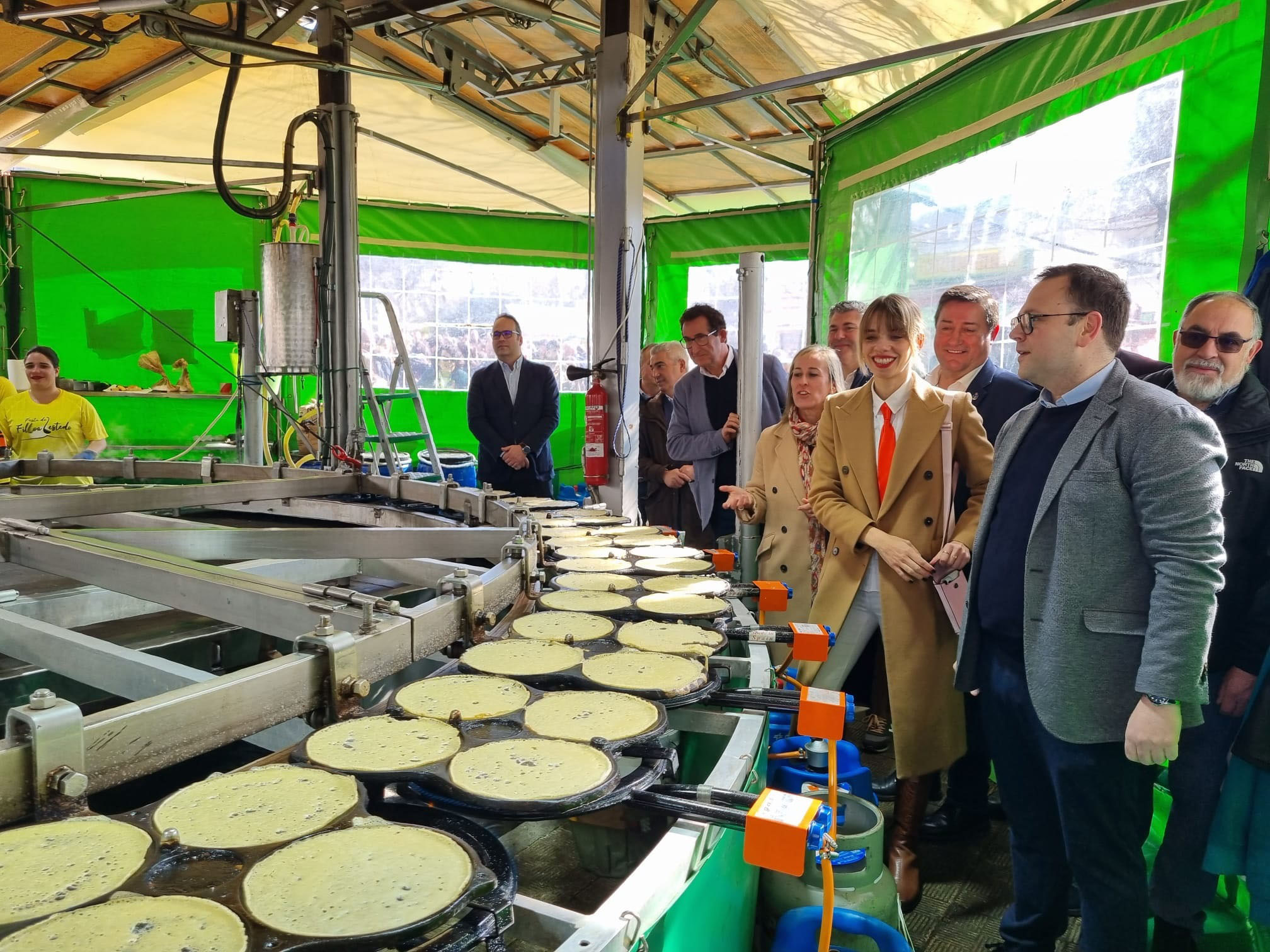Lestedo’s 40th “Filloa” Festival attracted more than 40,000 participants, who savoured more than 50,000 “filloas” thanks to the festival’s new format, which included two weekends of celebrations. Today, on the festival’s main day, thousands of people once again filled the streets of Lestedo, Boqueixión, from the early morning to enjoy the combination of two of the most renowned Festivals of Galician Tourist Interest: Lestedo’s 40th “Filloa” Festival and the “Atranques de los Xenerais da Ulla,” featuring this year the 6th Intermunicipal Parade of the “Xenerais da Ulla” (Generals of the Ulla) around the locality’s streets.
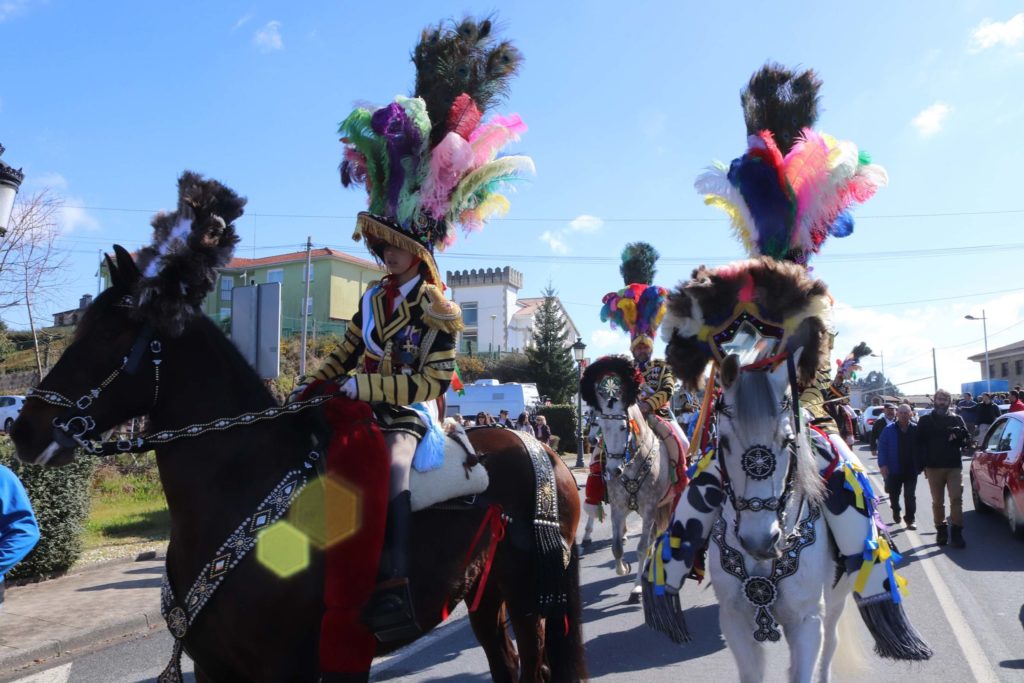
Although this very special parade began to be held in 2015, it had not been held since 2020. This year it featured the participation of more than fifty Xenerais (male and female generals), 31 of them on horseback, who came from Touro, O Pino, Santiago de Compostela, A Estrada, Vedra, Teo, and Boqueixón. A dozen of them then participated in the traditional “Atranques de Xenerais” event in the fairground.
More than 40,000 participants
Before the “atranques” (satirical displays) there was the festival’s opening speech and the awarding of the 2023 Aprons of Honour. The mayor of Boqueixón, Manuel Fernández Munín, highlighted the work carried out by Lestedo’s residents in general, and of the “Filloa” Cultural Association in particular, because “what began as a poor person’s meal has now become the most popular dish in Galicia’s Carnival festival. But we believe that the “filloa” is a delicacy that can be enjoyed all year round.” And as an example, he pointed to the recipes prepared by the person that delivered this year’s opening speech, Manuel Costiña, who was named “ambassador of the Lestedo “Filloa” all over the world.”
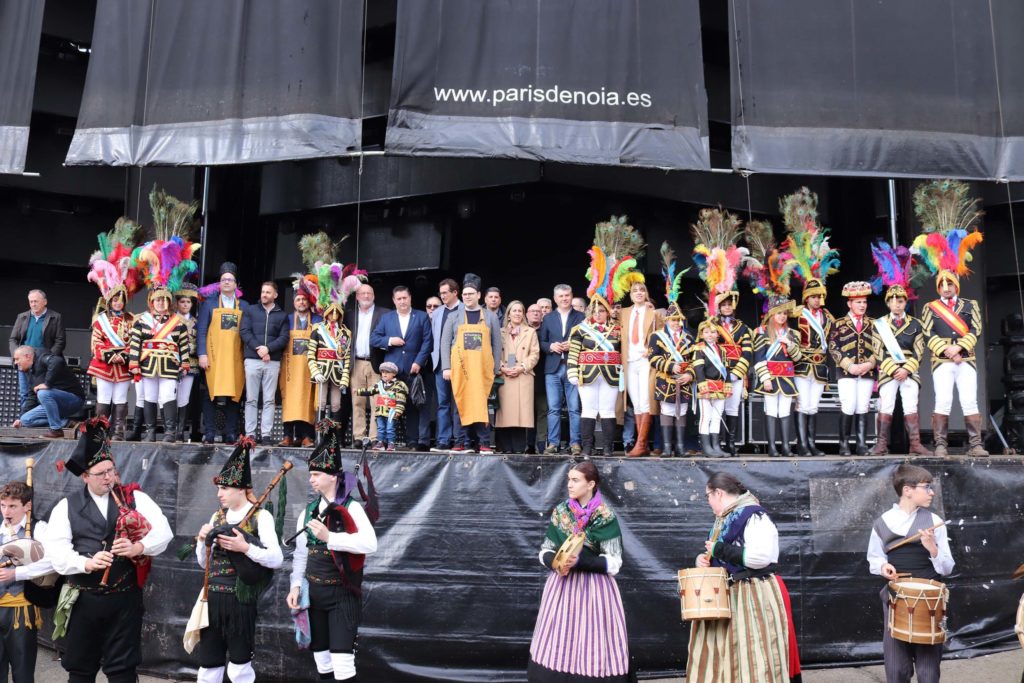
For his part, the president of the “Filloa” Cultural Association, José Manuel Canabal, thanked all the individuals, entities, and administrations who helped to make Lestedo’s 40th “Filloa” Festival possible. “In total, we’re talking about almost a month of activities with the participation of more than 40,000 people,” he indicated. “However, it’s not over yet since we’re going to keep on working to make our “filloa” grow even more.”
The member of the regional parliament Ovidio Rodeiro also highlighted the work of the local residents, who, “despite the hard work involved in making a “filloa,” have made thousands and thousands of them over the last forty years, which certifies what this parish is: a welcoming parish made up of hard-working, united people.” Finally, the regional minister for infrastructures Ethel Vázquez, declared that “to speak about the “filloa” is to speak about Galicia in capital letters, something that is passed down from one generation to another.” She continued speaking on a humorous note, saying “I was told that there was enough amoado (dough) for 30,000 “filloas,” so I hope there’ll be enough for everyone.” The list of authorities present in the box for distinguished persons included the Xunta de Galicia’s territorial delegate in Galicia, Gonzalo Trenor; the provincial councillor Antonio Leira; as well as mayors and regional ministers from the surroundings (O Pino, Touro, Sada).
Opening speech and aprons of honour
The speeches by the authorities were followed by the festival’s opening speech, which was delivered this year by Manuel Costiña, a prestigious chef who was awarded a Michelin star due to this restaurant O Retiro da Costiña (Santa Comba). Yesterday, he gave a singular master class featuring “filloas” filled with pig’s head and mussels. Costiña pointed out that “the Carnival festival is held in many places throughout the world, but our Carnival has a gastronomic element.”
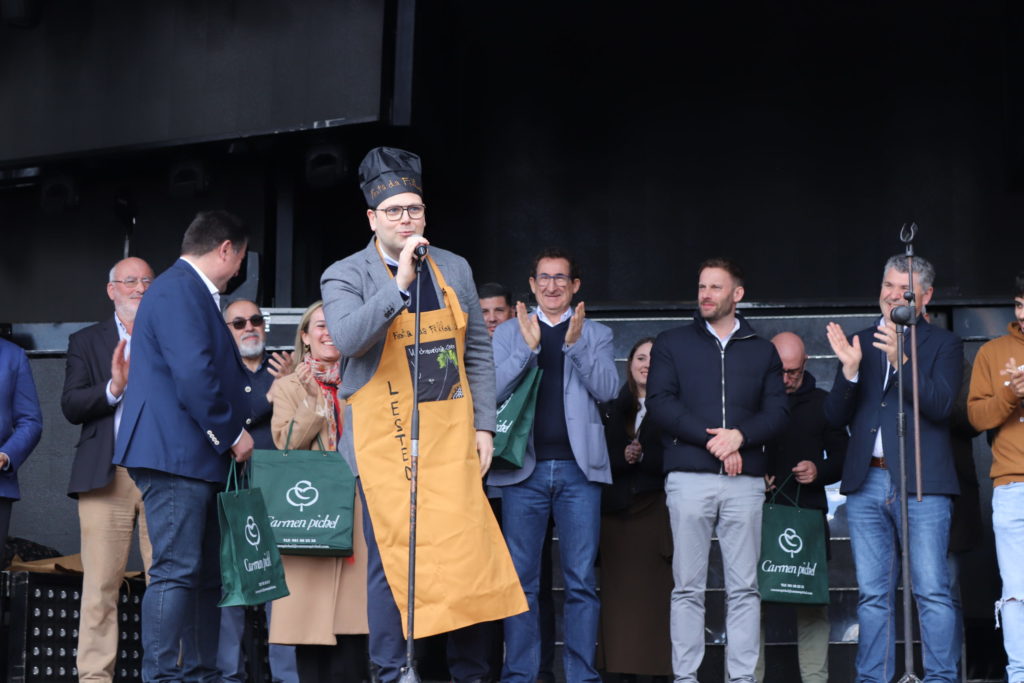
In this regard, he remembered that “when I was a child, the Carnival festival smelled of “filloas.” These “filloas” were made by my grandmother on top of a stone, a good stone that was in the house of a mason, my grandfather.” “ I also remember the aroma of lard melting on the hot stone: that was my Carnival perfume. This perfume was accompanied by the sound of that mix falling onto the stone,” declared Costiña. After explaining that each person has their own recipe, he ended his speech by shouting: “Long live the “filloa” that each person makes at home! Long live Lestedo and Boqueixón, long live Galicia!”
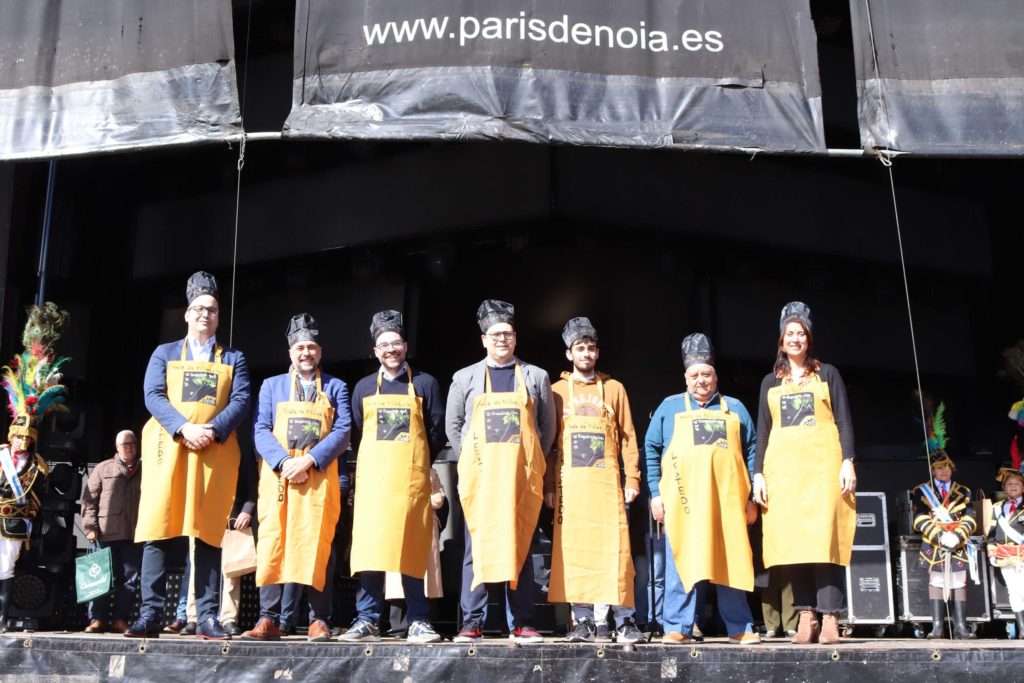
The mayor of Boqueixón then awarded him the first of the seven 2013 Aprons of Honour. The second one went to the director-general of the Xunta de Galicia’s Technical Office, Emilio José de la Iglesia Lema, with Ovidio Rodeiro doing the honours. The president of the “Filloa” Cultural Association awarded an Apron of Honour to Fernando Rodríguez Rabuñal, president of the “Filloas de A Pedra da Baña” Association. Antonio Leira did the same with the coordinator of A Moexmu and the Muimenta “Filloa” Festival, José Manuel Rus Rodríguez, who accepted the prize “on behalf of the filloeiras (female “filloa” cooks) and filloeiros (male “filloa” cooks) –yes, there are also filloeiros (male “filloa” cooks)– and everyone that makes the Muimenta “Filloa” Festival possible. May there never be lacking a “filloa” on our plates.”
Jesús Moldes Pérez, president of the Valongo Festival Committee, received his Apron of Honour and invited those in attendance to also visit Cerdedo-Cotobade on September 2 to enjoy the Valongo “Filloa” Festival. He likewise thanked those present for “keeping up this beautiful tradition and supporting this dessert of ours that we love so much and that tastes so good, namely the filloa.” Finally, the mayoress of Sada, María Nogareda Marzoa, received the Apron of Honour for organising the Sada “Filloa” Festival, highlighting that these celebrations “feature a tradition that must be continued.”
The awards ceremony ended with the regional minister for health, Julio García Comesaña, who was awarded the Apron of Honour by the regional minister Ethel Vázquez, who received the same award in 2015. García Comesaña pointed out that “the “filloa” is made with natural ingredients, which are wonderful and valuable as part of the healthy diet that we all should have. I encourage you to consume this type of product and to do some exercise. You don’t have to climb up Pico Sacro, but a little exercise is always good.”
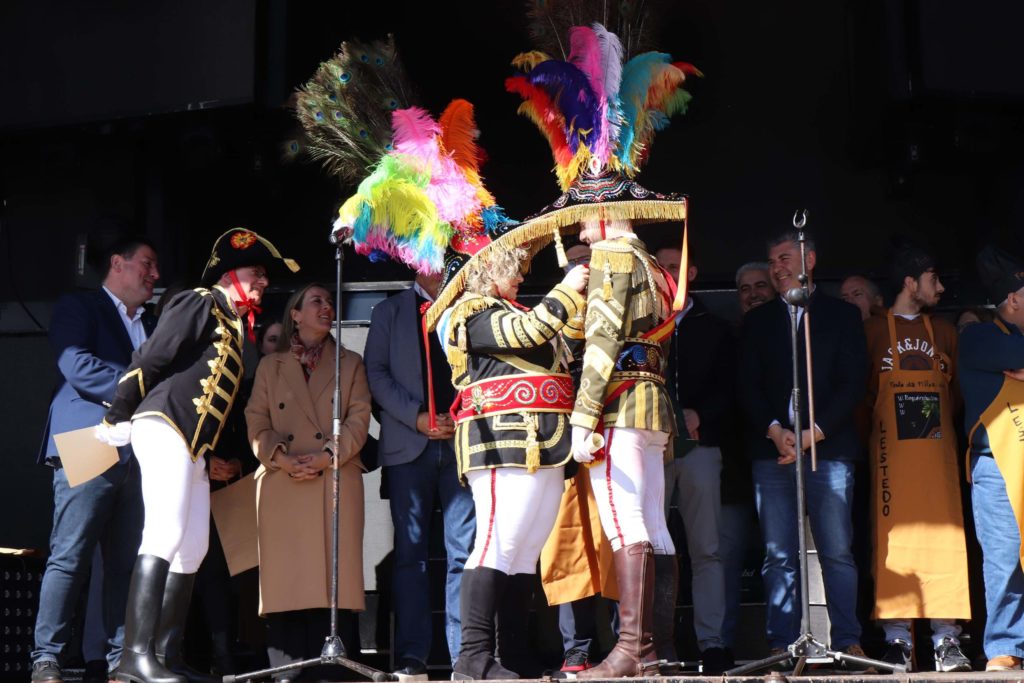
Tribute to the Xenerais (generals)
The event ended with a tribute to the xenerais (male generals) and xeneralas (female generals) of the Ulla, in which José Manuel Iglesias read the certificate naming José Canabal Peón “Xeneral da Filloa 2023,” an award that he received from this sister Uxía Canabal Peón, before taking part in one of the funniest “atranques” (satirical displays) of the day. Before the final “atranques,” Uxía Canabel herself participated in one on the stage along with María Mera, the presenter of the event.
All day long two filloeiras (“filloa”-making) machines made close to 2,000 “filloas” every hour, in addition to this year’s special recipes: filled “filloas”, savoury, sweet, “filloas” cooked on a stone… Moreover, the “Filloa” Cultural Association presented for the first time little rectangular boxes to make it easier to eat filled “filloas.”
The event was livened up thanks to different musical groups belonging to the “Mestre Manuel Gacio” Cultural Association, Luz do Ilicinio, and Grupo Ibiza. After lunch in the Cocida da Filloa, the París de Noia and Coleguitas orchestras added the finishing touch to the 40th Filloa de Lestedo Festival.
